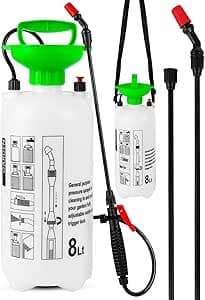Tomatoes are among the most rewarding vegetables to grow at home. Whether you’re an experienced gardener or a beginner, growing tomatoes from seeds can be an enjoyable and fulfilling journey. The key to success lies in choosing the right variety, providing optimal growing conditions, and following best gardening practices. If you want a stunning, flavorful harvest, the Tomato, Rainbow’s End, Heirloom variety is a fantastic choice. Get your seeds here and follow these expert tips for a bountiful harvest.

Choosing the Right Tomato Seeds
The first step to growing juicy tomatoes is selecting high-quality seeds. Heirloom tomatoes like Tomato, Rainbow’s End, Heirloom are known for their vibrant colors, rich flavors, and robust growth. Unlike hybrid varieties, heirloom tomatoes are open-pollinated, meaning they can be saved and replanted year after year while maintaining their excellent traits.
When choosing tomato seeds, consider factors such as climate, growth habit (determinate or indeterminate), and fruit size. The Rainbow’s End variety is an excellent option because it produces a mix of colorful, juicy tomatoes that thrive in various conditions.
Starting Tomato Seeds Indoors
Starting tomato seeds indoors gives them a head start and increases your chances of a successful harvest. Follow these steps:
1. Choose the Right Growing Medium
Use a light, well-draining seed-starting mix. Avoid garden soil, as it may contain diseases and pests that can harm young seedlings.
2. Plant the Seeds Correctly
Fill seed trays or small pots with the seed-starting mix. Plant the tomato seeds about 1/4 inch deep, gently covering them with soil. Water lightly but thoroughly.
3. Maintain Optimal Temperature and Humidity
Tomato seeds germinate best at temperatures between 70-80°F (21-27°C). To keep the soil warm, use a heat mat if necessary. Cover the trays with plastic wrap or a humidity dome to retain moisture.
4. Provide Sufficient Light
Once the seeds sprout (typically within 5-10 days), place them under grow lights or in a sunny window. Tomato seedlings require 12-16 hours of light daily to prevent leggy growth.
5. Water and Feed Properly
Keep the soil evenly moist but not soggy. Once seedlings develop their first set of true leaves, feed them with a diluted organic fertilizer.
Transplanting Seedlings Outdoors
After 6-8 weeks, your tomato seedlings will be ready for transplanting. However, before moving them outside, they must be hardened off to adjust to outdoor conditions.

1. Harden Off Seedlings
Gradually expose your seedlings to outdoor conditions by placing them outside for a few hours daily. Increase the exposure time over 7-10 days to strengthen them.
2. Prepare the Garden Bed or Containers
Tomatoes thrive in well-draining, nutrient-rich soil. Mix in compost or organic matter to enrich the soil. Choose a sunny spot as tomatoes need at least 6-8 hours of direct sunlight daily.
3. Space and Plant Correctly
Plant indeterminate varieties, like Tomato, Rainbow’s End, Heirloom, 2-3 feet apart to allow proper airflow and growth. Bury the stem deeper than it was in the seedling tray—this encourages stronger root development.
Essential Care Tips for Healthy Tomato Plants
1. Water Deeply and Consistently
Tomatoes require 1-2 inches of water per week. Water deeply at the base to encourage deep root growth. Avoid overhead watering to reduce the risk of fungal diseases.
2. Mulch to Retain Moisture
Applying mulch around tomato plants helps maintain soil moisture, regulate temperature, and suppress weeds. Use straw, wood chips, or shredded leaves as mulch.
3. Support Your Plants
For indeterminate varieties like Tomato, Rainbow’s End, Heirloom, install stakes, cages, or trellises to support the growing vines and prevent fruit from touching the ground.
4. Prune for Better Growth
Remove the lower leaves and suckers (small shoots growing between the main stem and branches) to improve air circulation and direct energy toward fruit production.
5. Feed with the Right Fertilizer
Tomatoes need balanced nutrients. Use a low-nitrogen, high-phosphorus fertilizer or compost tea every 2-3 weeks to support flowering and fruiting.
Managing Pests and Diseases
Keeping your tomato plants healthy involves proactive pest and disease management. Here are some common issues and solutions:
Common Pests
- Aphids – Rinse them off with water or introduce beneficial insects like ladybugs.
- Tomato Hornworms – Handpick them and use organic insecticides if necessary.
- Whiteflies – Use yellow sticky traps to reduce their population.
Common Diseases
- Blight – Rotate crops annually and avoid overhead watering.
- Powdery Mildew – Improve air circulation and apply organic fungicides.
- Root Rot – Ensure proper drainage and avoid overwatering.

Harvesting Juicy Tomatoes
After weeks of care, your tomatoes will be ready to harvest! Here’s how to tell when they’re ripe:
- Color: Fruits should reach their full, vibrant color depending on the variety.
- Firmness: Gently squeeze the tomato—it should be firm but slightly soft.
- Ease of Picking: Ripe tomatoes easily detach from the vine with a gentle twist.
For continuous harvest, pick tomatoes as they ripen and store them at room temperature to preserve their flavor.
Enjoy Your Homegrown Tomatoes!
Nothing compares to the taste of homegrown, juicy tomatoes straight from the garden. Whether you use them in salads, sauces, or sandwiches, your fresh tomatoes will elevate any dish. If you haven’t yet started your tomato-growing journey, there’s no better time than now! Get your high-quality Tomato, Rainbow’s End, Heirloom seeds today and experience the joy of growing your own delicious, colorful tomatoes.
Happy gardening!









